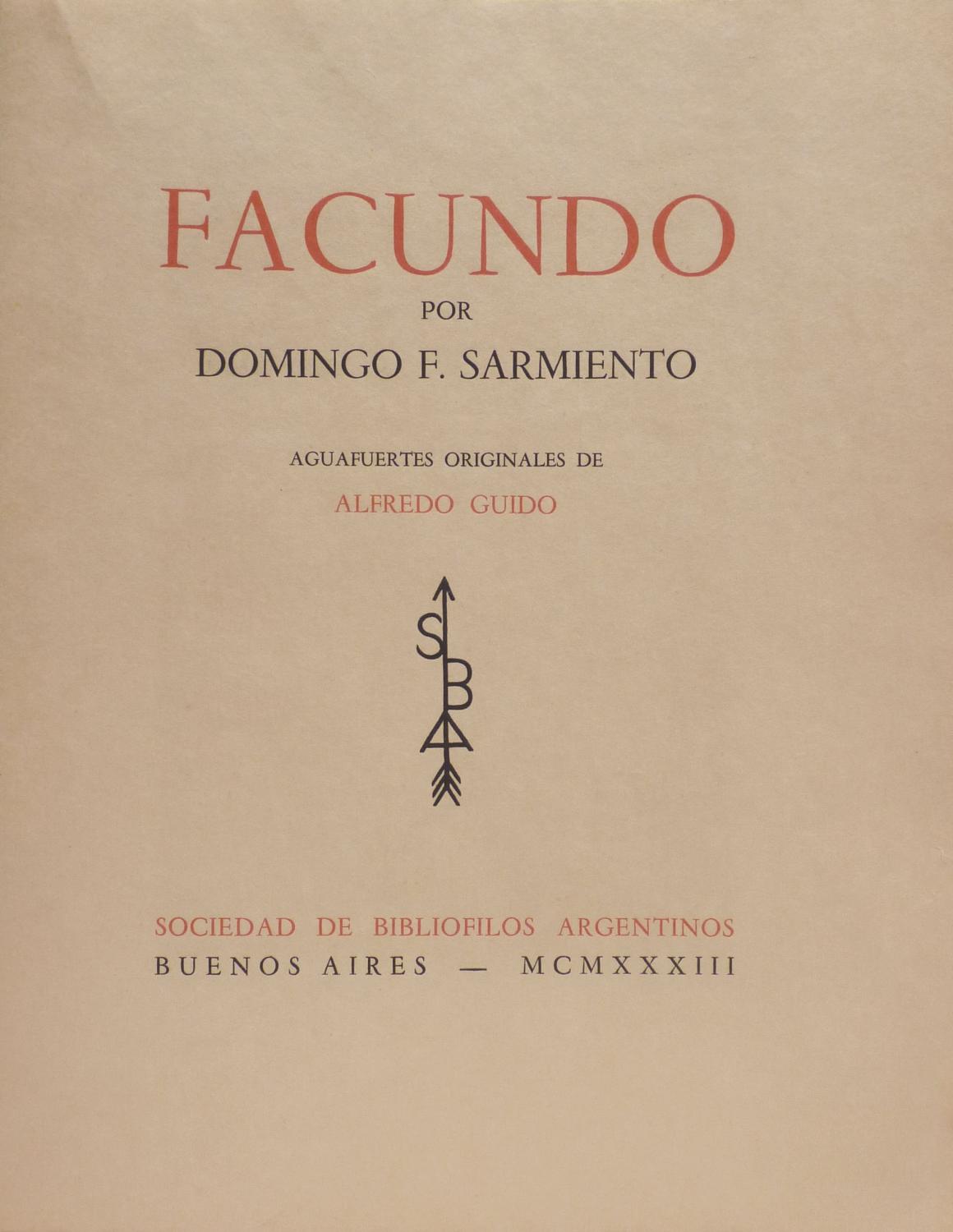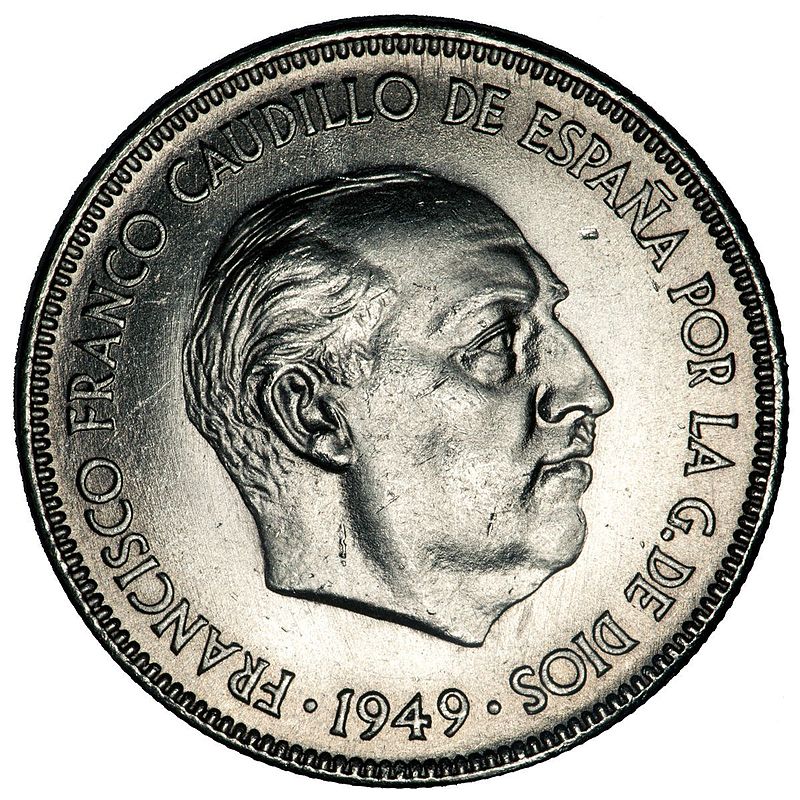It turns out there is no English translation for the word “caudillo.” Nothing. Nada. Apparently, no single English word can express the image of a strong leader and the fierce devotion of the unruly masses who follow him. English and its centuries of vocabulary move aside and make room for “caudillo.” We need it as it is—Spanish, Latin American, unEnglished. We need it foreign and menacing so it can be part of the American political vocabulary. It is a fascinating irony of the politics of untranslatability that only by preserving caudillo’s Spanish essence can we convey its deepest Anglo-Saxon meaning: a perennial fear of the masses and their insurmountable threat.
Caudillo chatter has existed for centuries, but the pioneer of “caudillo” in its political sense in the Americas was the Argentine writer and statesman Domingo Faustino Sarmiento. In 1845, running from Argentina, he wrote Facundo, a monumental work about state formation in Latin America. Whether we know it or not, it’s the blueprint we use today to discuss caudillos, from López de Santa Anna in nineteenth-century Mexico to Donald Trump today.

Ostensibly, Facundo is a sketch of Sarmiento’s own caudillo, Facundo Quiroga, a strongman from the province of La Rioja who supported the Federal dictator Juan Manuel de Rosas. But Facundo also provided a vivid description of a desolated country, an assessment of its barbaric political dynamics, and laid out the liberal state project that Sarmiento believed would heal the nation. Kaleidoscopic in its vision, Sarmiento’s description of the Argentine caudillo was a means of examining the rising world of modern politics and social relations.
In Facundo, Sarmiento’s picture of the caudillo is, above all, an examination of his followers, the “gauchos,” in whose life and habits Sarmiento aimed to reveal the social fabric of barbarism. Everything was there: Their lives intoxicated by the solitude of the pampas away from the urban centers, the idle life that abundance of land and food produced, the perpetual killing of cows and taming horses, and the personal dispositions that all these actions triggered. You think eating arugula or driving a truck predispose human beings to specific political options? The idea that diet and work shaped social behavior was there too. Most of all, Sarmiento was fascinated by the gauchos’ authoritarian tendencies, by the deep ties they built with their caudillos. The book is a depressing jeremiad on dashed hopes for modernization, from the challenge that gauchos’ personal loyalty to a caudillo would pose for liberal institutions, to the failed remedies of fences, cities, private property, and universal political rights.
One’s first mental note from reading Facundo: talk about caudillos is always, in reality, a discussion of their followers.
Transfixed by the untranslatable, Sarmiento peppered his writing with the civilizing power of French—albeit misspelled and misquoted, living proof of his nativism and self-teaching—and sent abroad his Spanish, with its legacy of the Spanish Empire’s Catholicism and stratified society, in hopes of receiving an English word of encouragement. After a meeting in 1848 in the U.S., he convinced the writer and educator Mary Peabody Mann to translate Facundo, despite her rudimentary Spanish. But by the time the translation was released in 1868, Sarmiento was home, running for president of Argentina, and so he preferred to smooth the edges of his rhetoric. Instead of Sarmiento’s original introduction, Mann’s prologue was simply a panegyric to Sarmiento himself. Anglophone readers were deprived of one of the most powerful beginnings in Latin American literature: “¡Sombra terrible de Facundo, voy a evocarte, para que, sacudiendo el ensangrentado polvo que cubre tus cenizas, te levantes a explicarnos la vida secreta y las convulsiones que desgarran las entrañas de un noble pueblo!”
As for the translation, Mann had no difficulty with “caudillo,” which she translated, simply, as “chieftain.” This deceptively easy translation missed the most important point for Sarmiento. The word “chieftain” associated the caudillo with Indian leadership, but Sarmiento described a different kind of exoticism, and took pains to distinguish what he saw as the pure savagery of the Indian from the particularly toxic barbarism of the gaucho. The latter was a mestizo inhabiting the borders, their rough-hewn bodies produced by the nation-state’s brush with the wilderness it was conquering. The lawless mestizos in the Argentine countryside were removed from the cities, but they were not entirely isolated from civilization; it was their half-way state that doomed them.
Later generations have taken a more literal approach than Mann. In the twentieth century, caudillo is translated simply as “caudillo.” No chieftain, no strongman (which would be closer), just caudillo. And so, in English, the real political meaning of the concept became apparent: it belonged to Latin America and its bloody battles for political emancipation and subsequent failed statehoods.
In 1936, Francisco Franco, officially at the beginning of a four-decade dictatorship, named himself “Caudillo de España.” Franco embraced the original sin of caudillismo: a supreme leader who combined military, religious, and political authority, he exerted a lordly power over the adoring masses. Had the word traveled back from Latin America to Spain, crossing the ocean from the former colonies back to its real origins?
In fact, “caudillo” had occurred in Covarrubias’s 1611 Tesoro de la lengua castellana, the first Spanish dictionary, in which “Caudillo” is defined as “guide of the troop… from which derives ‘captain.’” And under “xeqve”—the old way of writing “sheikh”—Covarrubias explains that “in Arabic,” the word could be understood as “old man, mayor, lord of vassals… a ‘caudillo’ of people.” Sarmiento, who thought of gauchos as the bedouins of the pampas, would have loved the social Darwinism here, as the untranslatable gave way to the newly untranslatable: just as Covarrubias found “sheikh” to be an Arabic Trojan horse in the Spanish Empire that had expelled the Morisco population two years earlier, so too “caudillo” remained irreducibly Spanish for Sarmiento and his Anglo Saxon successors.

By the time Franco named himself “Caudillo de España,” American scholars had established the untranslatable caudillo as strictly a Latin American malaise. In 1923, Mary Wilhelmine Williams wrote “Democracy in Hispanic America” for the North American Review. In it, she describes “these military executives, known as caudillos, [who] usually retained their political grip and held tyrannical sway until overthrown by other rivals of their own type.” They created a “vicious political circle characterizing Hispanic American politics,” she argued, “whose component segments are dictatorship, revolution, and anarchy.” And in 1932, the Hispanic American Historical Review published Charles E. Chapman’s “The Age of Caudillos,” which gave a thorough review of nineteenth-century Latin America political leadership, from Simón Bolivar to Porfirio Díaz: “leaders ruled on behalf of themselves and their following, and protected such others among the wealthy as made fitting arrangements with them.”
It was no coincidence that interest in 19th-century “caudillos” was revived in the 1930’s. Industrialization and mass politics in the U.S. raised the prospect of new forms of collective action, and popular pressure on liberal democracies for a fairer distribution of political power and economic resources increased. But theorists argued that unresolved modernization was the cause of the twentieth century’s dispossessions. For U.S. scholars and policymakers, populist leaders—these modern caudillos—could not possibly be agents of democratization and empowerment; they were only unscrupulous demagogues alluring the desperate, available masses. Organized workers were the new gauchos.
In the decades after World War II, modernization studies proliferated, frantically hunting for caudillos ready to exploit the shortcoming of liberal democracy, from Cárdenas to Andrew Jackson, from Juan Perón to Huey Long. Indeed, a Latin American ally of the U.S. once sought to scare the hell out of his American audience by calling Perón “a Latin Huey Long,” citing “his rousing abilities and fascistic tendencies, without the latter’s saving grace of really having some interest in the common man.” The name Huey Long effectively conveyed the fear of masses deceived by charismatic caudillos; the comparison did the trick. Fear moonwalked from Louisiana to Buenos Aires, and U.S. writers and diplomats saw Perón embodying their fears of mass participation in democracy and the subsequent changes it might bring.
Perhaps as a result, Peronism has enjoyed the privilege of being the only populist movement whose name has been anglicized; from Mexican Cardenismo to Brazilian Varguismo, all the other caudillista movements have remained in their native monstrosity. But Peronism helped to turn caudillo into a warning and an admonition in modern American politics: Barack Obama was called an “American Perón” by conservatives when he tried to legislate DACA above the legislative branch—a caudillo, many times over—while the Washington Post declared Donald Trump “the U.S.’s first Latin American president.” Yet these partisan attacks demonstrate a peculiar ideological agreement, conceiving the threat as an external and untranslatable contamination, a political import that refuses to speak English. In this way, conservatives and liberals agree that the foundations of the United States are strong and good natured; it is only from the shores and from the borders that a foreign contamination arrives to tarnish the strengths of the otherwise benevolent American nature, a stubbornly Latin American menace of irrational masses and abusive leaders.







